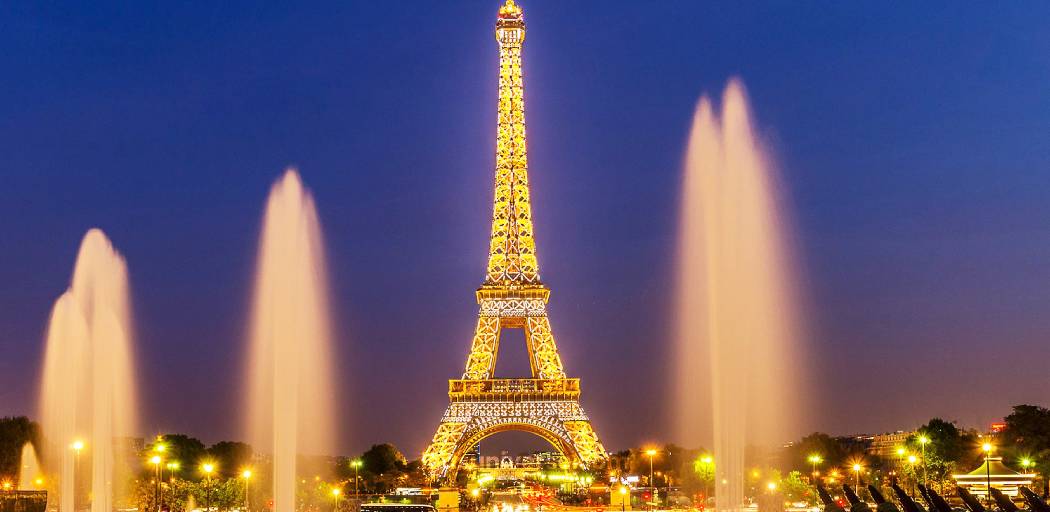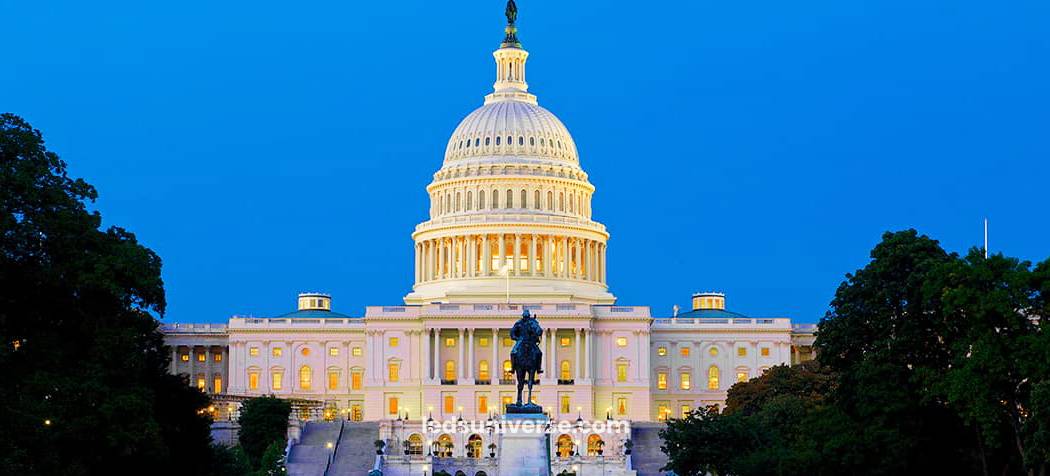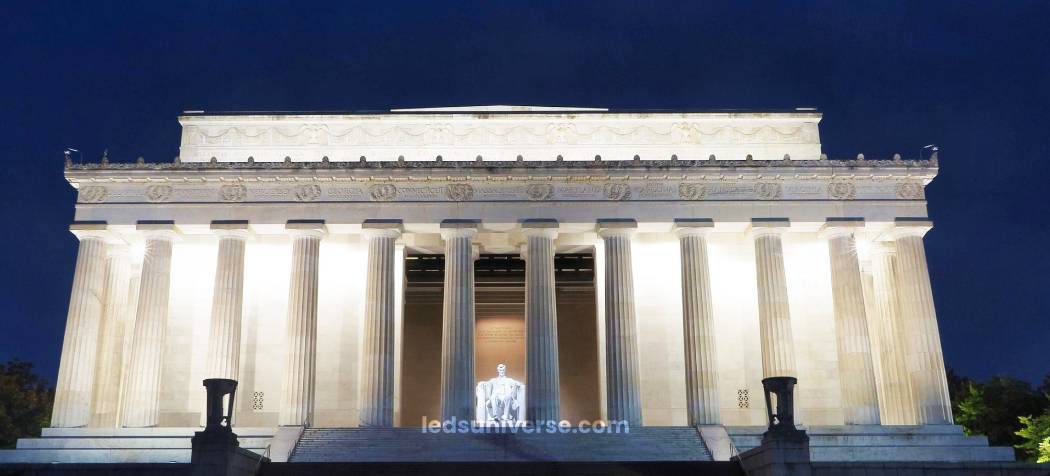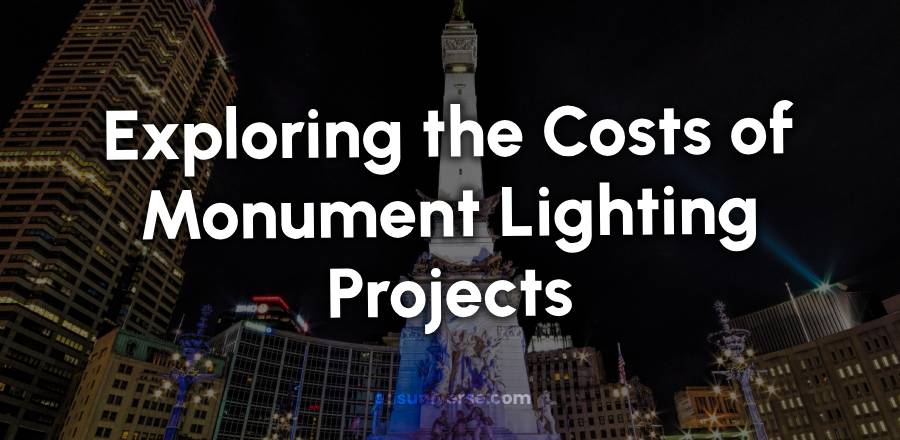As cities and historical sites increasingly seek to illuminate their iconic landmarks, understanding the financial aspects of such projects becomes more important. Monument lighting not only serves to enhance the aesthetic appeal of these structures but also plays a role in promoting tourism, protecting heritage, and creating safer, more vibrant public spaces. The scope of monument lighting projects varies widely, ranging from simple installations aimed at illuminating the monument itself to complex, multi-layered setups designed to enhance both the monument’s beauty and its surroundings. Whether illuminating ancient ruins or modern sculptures, these projects can come with substantial costs that need to be carefully planned and managed.
| Category | Estimated Cost Range (USD) | Funding Sources |
|---|---|---|
| Design and Planning | $10,000 – $50,000 | Government grants, private sponsorships, local government funding |
| Type of Lighting and Materials | $5,000 – $50,000 | Corporate sponsorships, public funding |
| Installation and Labor Costs | $20,000 – $200,000 | Local government, corporate partnerships |
| Infrastructure Costs | $10,000 – $100,000 | Public utility funds, heritage preservation grants |
| Landscaping and Site Preparation | $5,000 – $50,000 | Local governments, cultural organizations |
| Security and Surveillance | $5,000 – $30,000 | Government security funding, local sponsorships |
| Event Costs and Management | $10,000 – $50,000 | Corporate sponsorships, tourism-related funds |
| Energy Consumption | $500 – $5,000 per year | Government incentives for energy-efficient lighting |
| Maintenance and Upkeep | $1,000 – $10,000 annually | Long-term municipal budgets, private donations |
| Environmental and Regulatory | $2,000 – $10,000 | Environmental grants, public funding |
| Technological Advancements | $5,000 – $30,000 | Government grants for innovation, corporate sponsorships |
| Government and Public Funding | $20,000 – $500,000 | Local, state, and federal grants |
| Corporate Sponsorships | $10,000 – $100,000+ (depending on sponsorship agreement) | Corporate donations for branding and recognition |
Table of Contents
ToggleFactors Contributing to Monument Lighting Costs
Understanding the full scope of costs involved in monument lighting requires recognizing a wide range of factors that influence the total expenses. These costs span several stages, from design and planning through to installation, operation, and long-term upkeep. As each of these factors can significantly impact both initial outlay and ongoing operational expenses, it is essential for project planners to consider them in the early stages of development.
Design and Planning: A Step-by-Step Process
The design phase of a monument lighting project is one of the most critical stages, laying the foundation for the entire installation. It is in this phase where the initial concept is developed, logistics are planned, and technical specifications are defined. Often, a collaborative approach is taken, involving professional lighting designers working closely with architects, engineers, and local authorities. This team ensures that the lighting system not only enhances the monument’s visual appeal but also aligns with the functional requirements of the space.
The cost of the design phase can vary greatly depending on the complexity and scale of the project. For simpler projects—such as those where the goal is merely to illuminate the monument with basic floodlights—the design costs may be relatively low. However, for more intricate designs that incorporate multiple elements—like spotlights, uplights, or color-changing LEDs—the costs of designing and conceptualizing the installation can increase. Moreover, environmental considerations must be taken into account. For example, a monument located in a densely populated urban area will have different lighting requirements compared to one situated in a remote, natural environment or a historically sensitive site.
In this phase, the project budget must also consider the selection of lighting types, the monument’s proximity to power sources, and any regulatory or environmental restrictions. If the monument is located in a protected or heritage-listed area, the lighting design must comply with stringent local regulations. Environmental issues, such as reducing light pollution or preserving the site’s natural surroundings, will also influence the design and budget.
Type of Lighting and Materials

The types of lights chosen for the project are one of the primary factors influencing the overall cost. Different lighting technologies come with distinct price points, energy efficiencies, and longevity. Traditional lighting options like incandescent and halogen bulbs are often more affordable upfront but tend to have higher operating costs. These lights consume more energy, require more frequent bulb replacements, and are less durable over time. As a result, their long-term operational and maintenance costs can quickly outweigh their initial low purchase price.
On the other hand, LED lights, while more expensive at the outset, offer numerous benefits in terms of energy efficiency, longer lifespans, and reduced maintenance. LEDs consume less electricity, have a lifespan that can last up to 50,000 hours or more, and require much less frequent replacement, which can lead to significant savings in the long term. These factors make LED lights a more economical choice over time, especially in large-scale projects where energy consumption and maintenance are ongoing concerns.
In some cases, more specialized lighting solutions, such as fiber optics, may be used for unique or artistic effects. Fiber optic lights can create striking visual displays and provide flexibility in design, but they often come with a higher installation cost and may require more complex maintenance due to their delicate components.
Installation and Labor Costs
Installation represents a major part of the monument lighting project’s overall cost. The complexity of the installation, as well as the size and location of the monument, can significantly affect the expenses. Large monuments or those in difficult-to-reach areas often require specialized equipment, such as cranes, scaffolding, or aerial lifts, to install the lights safely and effectively. The labor required for installation will depend on the number of workers, the time frame of the project, and the complexity of the work. For intricate lighting setups, skilled electricians, technicians, and even artists may be needed to ensure the lights are installed according to design specifications.
Electrical installation is a particularly critical phase of the project. Proper wiring and connection of electrical components are essential to prevent malfunctions or hazards. The installation team must also ensure that the lights are securely anchored and weatherproofed, particularly if the monument is outdoors and exposed to the elements.
Related Costs in Monument Lighting Projects
Beyond the obvious costs related to design, installation, and maintenance, there are several other related expenses that contribute to the total cost of the project. These costs can be overlooked during the planning stage but are vital for the successful and sustainable operation of the lighting system.

Infrastructure Costs
Infrastructure costs can be significant in monument lighting projects, especially when the monument is located in an area without access to an established power grid. Electrical lines, power supply systems, and other infrastructure components may need to be installed to support the lighting system. Extending power lines to remote or hard-to-reach monuments can add a substantial amount to the project budget, so these costs must be taken into account early in the planning process.
Landscaping and Site Preparation
In some cases, additional landscaping or site preparation may be required to enhance the overall impact of the lighting. This can involve constructing pathways, building supporting structures for the lights, or clearing the area to improve visibility. The scope and scale of the landscaping will depend on the monument’s location and the desired effect of the lighting. While these costs can vary, they are essential to the overall success of the project.
Security and Surveillance
Illuminating a monument often attracts more visitors, which increases the need for security. The lighting system itself may become a target for theft, vandalism, or damage, particularly if the monument is in a less visited or remote location. In such cases, additional security measures—such as surveillance cameras, motion sensors, or on-site security personnel—must be factored into the project’s budget.
Event Costs and Management
Monuments often serve as locations for cultural events, festivals, or public gatherings. The costs associated with hosting such events should also be considered in the project budget. Temporary infrastructure, such as seating, staging, and sound systems, may be necessary for events, as well as the additional costs of security staff, crowd control, and logistics. These costs, while indirect, ensure that the monument continues to be an active, public-facing landmark that can support community engagement and cultural activities.
Operational Costs of Monument Lighting
Once the lighting system is installed and functional, ongoing operational costs will begin to accrue. These costs include energy consumption, regular maintenance, and other ongoing expenses that ensure the lights continue to function properly over time.
Energy Consumption and Efficiency
Energy costs are one of the largest ongoing expenses in monument lighting. The amount of electricity used will depend on the number of lights, their type, and how long the lights remain on each day. Monuments illuminated for long periods, such as those used for evening events or tourism, can lead to high electricity bills.
Energy-efficient lighting systems, such as LEDs or solar-powered lights, can significantly reduce these costs over time. Solar-powered lighting systems, in particular, offer the advantage of reducing reliance on the grid by harnessing the power of the sun. While the initial setup costs of solar panels may be higher, the long-term savings on energy bills often justify the investment.
Maintenance and Upkeep
Monument lighting systems require regular maintenance to ensure that they continue to function properly. This maintenance includes tasks such as replacing burned-out bulbs, cleaning light fixtures, inspecting wiring for wear, and addressing any weather-related damage. In areas with harsh climates, these maintenance costs may increase due to the greater wear and tear on equipment. More complex lighting systems, such as those with programmable elements or color-changing features, may also require specialized technicians for repairs and adjustments, further increasing operational costs.
Environmental and Regulatory Considerations
Monument lighting projects must adhere to local environmental guidelines and regulations to minimize their impact on the surrounding ecosystem and community.
Environmental Impact and Sustainability
One of the primary environmental concerns with monument lighting is light pollution. Excessive lighting can negatively impact local wildlife, disrupt natural habitats, and affect the quality of life for surrounding communities. As such, many monument lighting projects strive to minimize light pollution by using energy-efficient technologies that direct light only where it is needed. Additionally, the use of renewable energy sources, such as solar panels, can help mitigate the environmental impact of the lighting system.
Regulatory Compliance and Permits

Before proceeding with a monument lighting installation, it is necessary to obtain the relevant permits from local authorities. These permits will dictate the types of lighting allowed, the location of the fixtures, and the amount of light that can be emitted. For monuments located in protected or heritage-listed areas, additional regulations may apply, and the permitting process may take longer and require more thorough documentation. Failure to adhere to these regulations can lead to fines, delays, or even the removal of the lighting system.
Long-Term Considerations: Maintaining Monument Lighting for the Future
As with any major project, it is important to consider the long-term sustainability of monument lighting installations. Technological advancements and future energy cost fluctuations should be factored into long-term planning to ensure the system remains cost-effective and efficient.
Technological Advancements and Upgrades
Lighting technologies are continually evolving, and older systems may eventually become outdated. For example, advances in LED technology or new energy-efficient systems could make older lighting installations less efficient or even obsolete. Periodic upgrades to the lighting system may be necessary to maintain its functionality and ensure that the monument remains visually striking and energy-efficient over time.
Future Energy Costs
Energy prices can fluctuate over time, and it’s important to account for the possibility of rising energy costs in long-term budgets. Including a buffer for potential increases in energy prices can help ensure the sustainability of the monument lighting project over the long run.
Funding and Partnerships: Sharing the Costs
Monument lighting projects often rely on a mix of public, private, and corporate funding. Government grants, sponsorships, and community partnerships can help offset the substantial costs associated with these projects.
Government and Public Funding
Many municipalities and government entities offer grants and funding programs that support public art, heritage, and tourism initiatives, including monument lighting projects. These funds may be provided as part of larger efforts to enhance public spaces, preserve cultural heritage, or promote local tourism. However, securing such funds typically involves a competitive application process, requiring detailed project proposals and planning.
Corporate Sponsorships
Corporate sponsorships can also play a role in financing monument lighting projects. In exchange for branding opportunities or recognition, businesses may contribute to the costs of installation or ongoing maintenance. These partnerships can provide a valuable source of funding, reducing the financial burden on public authorities or heritage organizations.
Conclusion
Monument lighting projects are multifaceted and complex endeavors that involve significant costs and considerations across several stages of the process. From design and installation to long-term operational costs, each phase requires careful planning and budgeting. By understanding the various factors that influence the total cost of the project—including environmental, regulatory, and technological considerations—cities and historical sites can ensure the successful implementation of monument lighting projects that are both financially sustainable and effective in highlighting the beauty and significance of their iconic landmarks. Through thoughtful investment, these projects can enhance public spaces, promote tourism, and preserve the legacy of historic monuments for generations to come.
